by Gareth Smyth
In threatening Iran with the “strongest sanctions in history,” Secretary of State Mike Pompeo was probably not thinking of the Mongol sieges of Iranian cities. Two days later, however, Ayatollah Ali Khamenei evoked Iranians’ sense of their 4,000-year past when he claimed Donald Trump would be “lost in history.”
In another statement carried on the leader’s official website, Khamenei proclaimed, “The Iranian nation is an independent nation: a dear one,” and argued that the dynasties preceding the Islamic Republic “made the nation submit to the imposition of other powers.” The 1979 Islamic Revolution had restored “dignity” and national independence.
Awareness of history and sense of nation are both strong in Iran. In its official response to Trump’s decision of May 8 to abandon U.S. commitments under the eight-party 2015 nuclear agreement, Tehran denounced “Mr. Trump’s absurd insults against the great Iranian nation.” A Foreign Ministry statement on May 10 proclaimed that “the people of Iran will with calm and confidence continue their path towards progress and development.” It lauded Iranians as “brave and civilized people” whose country is “a trustworthy and committed partner for all who are prepared to cooperate on the basis of shared interests and mutual respect.”
Thus, Iran adopted the moral high ground with a sense of superiority. In regularly portraying American leaders as cowboys, the Iranian media reflects a popular sense that for all its technological and economic prowess, the US has a brashness and short history that pales before the rich achievements of Iran over 4,000 years.
With the nationalism of “America First” encouraging other nationalisms, Iran would never be an exception. What forms, then, might Iranian nationalism take?
Ey Iran
On April 18, the annual Army Day parade of the armed forces marched for the first time since the 1979 Islamic Revolution to the song Ey Iran, which is often seen as an alternative to the official anthem of the Islamic Republic. Yet both the regular army and the more ideological Islamic Revolutionary Guard Corps (IRGC) marched to its refrain.
“Ey Iran was composed in 1944 by Ruhollah Khaleqi,” Nima Mina, Senior Lecturer at the School of Oriental and African Studies, London, told me. “The lyrics were by Hossein Gol-e Golab, and it was first performed and recorded by the iconic Iranian singer Gholam-Hossein Banan. Neither Khaleqi, nor Gol-e Golab, nor Banan, had any known ideological affinity with Iran’s Islamists. Since 1979, Ey Iran is often played in gatherings inside and outside Iran by Iranians who don’t recognize the official anthem as their own.”
Mina sees the use of Ey Iran as a “sign of desperation.” He says the Islamic Republic’s propagandists are “aware that sectarian religious propaganda splits Iranian society and has no potential to mobilize the regular armed forces, let alone the population at large.”
But the relationship among dynasties, religion, and nation in Iran is long and complex. The Safavid dynasty converted Iran to Shi’ism beginning in the early sixteenth century in part to create greater unity against the Sunni Ottoman Empire—as crucial a step towards a modern nation-state as the reign of Elizabeth I in England when a national Protestantism crystalized against Catholic Spain.
Many historians argue that the 1979 Islamic Revolution emphasized religion rather than nation, but in general Iranians remain nationalistic. For example, they effortlessly juggle the lunar Islamic calendar and a solar Iranian calendar, marking the festivals of both. At the same time, Iranians commonly look down on Arabs, with some of those most critical of the country’s clerics resenting them as Arabs.
Liberty vs. Religion
This makes for considerable cultural variation, a subject recently tackled by Saeid Golkar, visiting assistant professor at the University of Tennessee at Chattanooga. Golkar’s paper, published by the Washington Institute for Near-East Policy, entitled “Cultural Heterogeneity in Post-Revolutionary Iran,” argues that the Islamic Republic faces a cultural conflict between “religious-Hezbollahi” and “hybrid post-modern” worldviews. The post-modernists, who are generally young, believe liberty is as important as religion. They meet in coffee houses rather than religious centers, although they are not necessarily secularists and may even embrace a rising wave of Sufism.
Within the religious camp, Golkar highlights differences between the Hezbollahis and traditionalists. The Hezbollahis support velayat-e faqih, the constitutional principle giving pre-eminence to the supreme leader. The traditionalists are skeptical of politics and may follow Ayatollah Ali al-Sistani, the Iranian-born Najaf cleric, rather than Khamenei, Iran’s supreme leader.
Golkar traces divisions into the keeping, or not, of pet dogs, and the names chosen for children. Those with a religious world-view pick Ali and Fatima. Post-modernists prefer pre-Islamic, non-Arab names like Cyrus and Nazanin.
But Golkar suggests the Islamic Republic’s leadership could broaden its support base through a “hybrid nationalism” that could take steps like using the Ey Iran anthem. Mahmoud Ahmadinejad, president for eight years from 2005, was unpredictable and difficult for Ayatollah Khamenei to manage, but many of his actions and rhetoric showed the appeal of nationalism. Ahmadinejad often paid homage to pre-Islamic Iranian figures, for example in a ceremony in 2010 when the British Museum loaned Iran the Cyrus Cylinder, a sixth-century BC clay cylinder in which King Cyrus the Great supposedly proclaimed the world’s first charter of human rights.
Earlier, the 1980-88 war with Iraq saw the leaders of the Islamic Republic evoke notions of sacrifice rooted in both Shi’ism and nation. The Mujahideen-e Khalq, once a strong left-wing opposition to the Islamic Republic, became “traitors” when they allied with Saddam Hussein and then attacked Iran just after Tehran accepted a UN-brokered ceasefire. Last year, by portraying the MEK as suitable rulers of Iran, John Bolton, Trump’s current national security advisor, outraged Iranians.
Golkar told me that “hybrid nationalism” may remain relatively muted as long as the 78-year-old Ayatollah Khamenei remains in power. “The first generation of Revolutionary Guard [IRGC] leaders, like Fadavi, don’t like nationalism,” he said, referring to Rear Admiral Ali Fadavi, commander of the IRGC’s Navy. “Ayatollah Khamenei has the same idea—nationalism goes against his notion of Islamic civilization. A majority of the clergy are naturally not nationalist. But the younger swath of Guards and clerics is more pragmatic—many activists admire [Russian President Vladimir] Putin as a strong leader who scares the West.”
Actualizing Nationalism
The potential challenge posed by hybrid nationalism was recently illustrated by the apparent discovery in Shahr-e Ray, southern Tehran, of the remains of Reza Shah, ruler from 1925 to 1941. “The family want the body returned, while Iranian nationalists want it buried where they can visit the ‘father of modern Iran’,” said Golkar. “Hardliners want it destroyed, or buried secretly.”
According to Hassan Khalilabadi, Tehran City Council’s head of Cultural Heritage and Tourism, the remains have now been buried in the area where they were found, apparently discretely. Iranian nationalism could be an easier option, then, for the Islamic Republic once Khamenei is gone and a new supreme leader is in place. But is that soon enough?
“To stay powerful, the leaders of the Islamic Republic have to adjust their relationship with society,” said Golkar. “Imagine if someone like Qassem Suleimani [IRGC al-Quds force commander] or Mohammad Bagher Ghalibaf [former Tehran mayor] visited the tomb of Cyrus the Great and talked about being Iranian and Muslim and about Iran’s glorious past. This would be popular even with secular nationalists.”
Another popular nationalist move might be ending the nuclear restrictions that Iran accepted under the 2015 nuclear deal. A survey conducted in mid-April by the Toronto-based Iranpoll found that 67% of Iranians said that if US violated the JCPOA, Iran should retaliate by restarting aspects of its nuclear program.
Gareth Smyth, who has covered the Middle East since 1992, was chief correspondent of the Financial Times in Tehran 2003-7

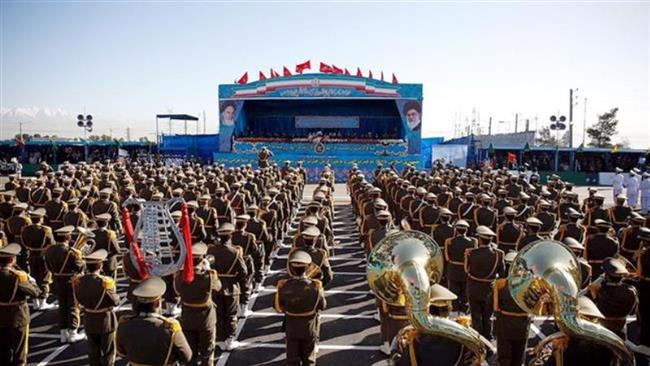
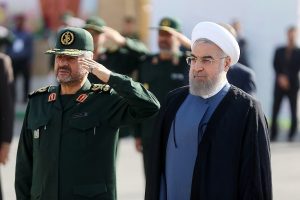
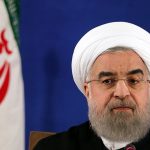
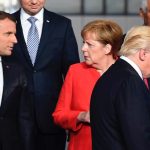
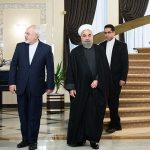
There is no way the Ayatollahs would accept Zoroastrianism, but more importantly Zoroastrians accepting them.
The person wiring this article is delusional beyond belief. You cannot put the Koran on the Haftseen. It is an insult to both Islam and Zoroastrianism.
Good grief what will they think of next.
The Ayatollah has seen that 80 millon Iranians celebrate the Spring Equinox more than their dogma and he has no choice.
Many of Iranian already put the Koran on the Haftseen. Where do you live?
This is a sign of pragmatism. The religious rhetoric of Iranian leaders is diminishing to a lip service to traditional believers and they understand that by the natural decline in traditional supporters they need to widen the circle by giving credit to old power sources to keep the majority in support.
The Islamist killers in the occupied Iran evoke Iranian heritage, people and the pre Islamic culture whenever they get in trouble. Or they act like they care about the country. They have no sympathy for earthquake victims and as recently as last week they murdered innocent demonstrators in the city of Kazeroon. In Kazeroon the mullahs are trying to steal water by splitting the city up. Their schemes are concocted by the illustrate mullahs. They are not even smart about embezzling, just put a gun to people’s heads and steal the resources. Money that more than likely will end up in the overseas bank accounts of the thieves of Islamic Republic. Truth Iranians hate these Islamists and their hold on their country. They love what Trump is doing. About time the West stopped appeasing these murderers just because there is freaking Oil in the ground.
In public the Islamic Republic “Sings” many “Songs”. It is behind closed doors however, that they Belly Dance to Arabic music.
At the end of the day, the Islamic Republic is a massive failure. The experiment of letting a Moslem God rule a country has only yielded horrible results. Above all, Iran is guilty of not knowing it’s place in the world order. It has over extended it’s influence forcing itself upon and creating chaos in the region, trying to “help” countries who don’t want Iran’s help.
Finally, Iran is a liar. It has most certainly followed North Korea’s lead, holding the world hostage with nuclear ambitions, for ransom.
This degree of reckless brinksmanship, irresponsible governance, and the huge waste of Iran’s treasured resources, has cost the people of Iran dearly. And their frustration with it is building with each new fiasco, and each new protest that sparks up from it.
One of these days, the Persian Tea Kettle will certainly boil over, and the greedy Mollahs and their murderous monopolist ilk will either be cast out of Iran, by the people they have only shown a deep seeded hatred for, or from yet another outside intervention.